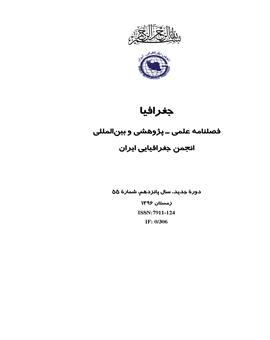تحلیل رقابت پذیری کیفیت زندگی کلانشهر تهران در سطح جهانی
محورهای موضوعی :فرزانه سامانپور 1 , افشار حاتمی 2 , شایان بابایی 3
1 - تهران
2 - تهران
3 - مدیریت شهری
کلید واژه: رقابت پذیری کیفیت زندگی ضریب تغییرات تهران,
چکیده مقاله :
امروزه رقابت پذیری به یکی از مفاهیم پرکاربرد در عرصه مباحث شهری و منطقه ای تبدیل شده است. علت توجه بیش از حد به این مفهوم تغییرات در اقتصاد جهانی، ساختار دموگرافیکی بیشتر ملت ها، ساختارهای اجتماعی و فعالیت ها بوده است. هدف از این پژوهش، بررسی و تحلیل وضعیت رقابت پذیری کلانشهر تهران در سطح جهانی در زمینه شاخص های کیفیت زندگی است. بدین منظور اطلاعات موردنیاز کیفیت زندگی از مرکز اطلاعات شهرهای جهان (NUMBEO) اخذ و تحلیل شد. روش تحقیق توصیفی ـ تحلیلی است. نتایج تحقیق بیانگر آن است که آنچه در بین کلانشهرهای مورد مطالعه بیشترین نابرابری را ایجاد کرده است، معیارهای نسبت درآمد به قیمت ملک، هزینه زندگی و قدرت خرید است. کیفیت زندگی، امنیت، آلودگی، اقلیم، بهداشت و مدت زمان حرکت به ترتیب از رتبه چهارم تا نهم قرار دارند. نتایج مدل الکتره برای سطح بندی رقابت پذیری کلانشهرها نیز نشان داد که لس آنجلس در بالاترین سطح از کیفیت زندگی قرار دارد. دهلی، مکزیکوسیتی، کلکته، کراچی، استانبول، نیویورک، سئول، بوینس آیرس در سطح دوم و توسعه یافته قرار دارند. توکیو، قاهره و مانیل در سطح سوم و درحال توسعه و داکا، مسکو و تهران در سطح چهارم و پایین از کیفیت زندگی قرار گرفتند. پایین ترین سطح کیفیت زندگی نیز مربوط به شهرهای مومبای، بانکوک، جاکارتا، شانگهای، پکن و سائوپائولو بود. همچنین کلانشهر تهران در رتبه 11 از 17 رتبه قرار دارد. به طورکلی نتایج حاکی از آن است که کلانشهر تهران به لحاظ کیفیت زندگی قدرت رقابت پذیری بسیار کمی دارد که نیازمند توجه جدی به معیارهای تاثیرگذار در کیفیت زندگی جهت رقابت پذیری در عرصه جهانی دارد.
Tehran's territory is about 23 cities, 237 villages and hundreds of activities, covering a total of about 2 million people, which, along with national conditions, continues to attract immigrants, population growth and sustainability. Spread of official and informal settlements if we ignore the harassment of the northern part of Tehran, the southern zone is the focus of the poor and dense lives that seems to be the mechanism of civil disarmament of urban and regional development programs, Acceptance of this type of residence has made. In this article, referring to the studies and the secondary data collected in the field of social and cultural issues of the Tehran metropolitan area (especially the social and cultural impact assessment of the comprehensive plan of privacy) and SWOT analysis of about 30 experts in this area, summing up Challenges and socio-cultural issues of Tehran metropolitan area, the strategies of macroeconomic stability and sustainable development are based on the assessment of the socio-cultural impact of privacy in Tehran.


